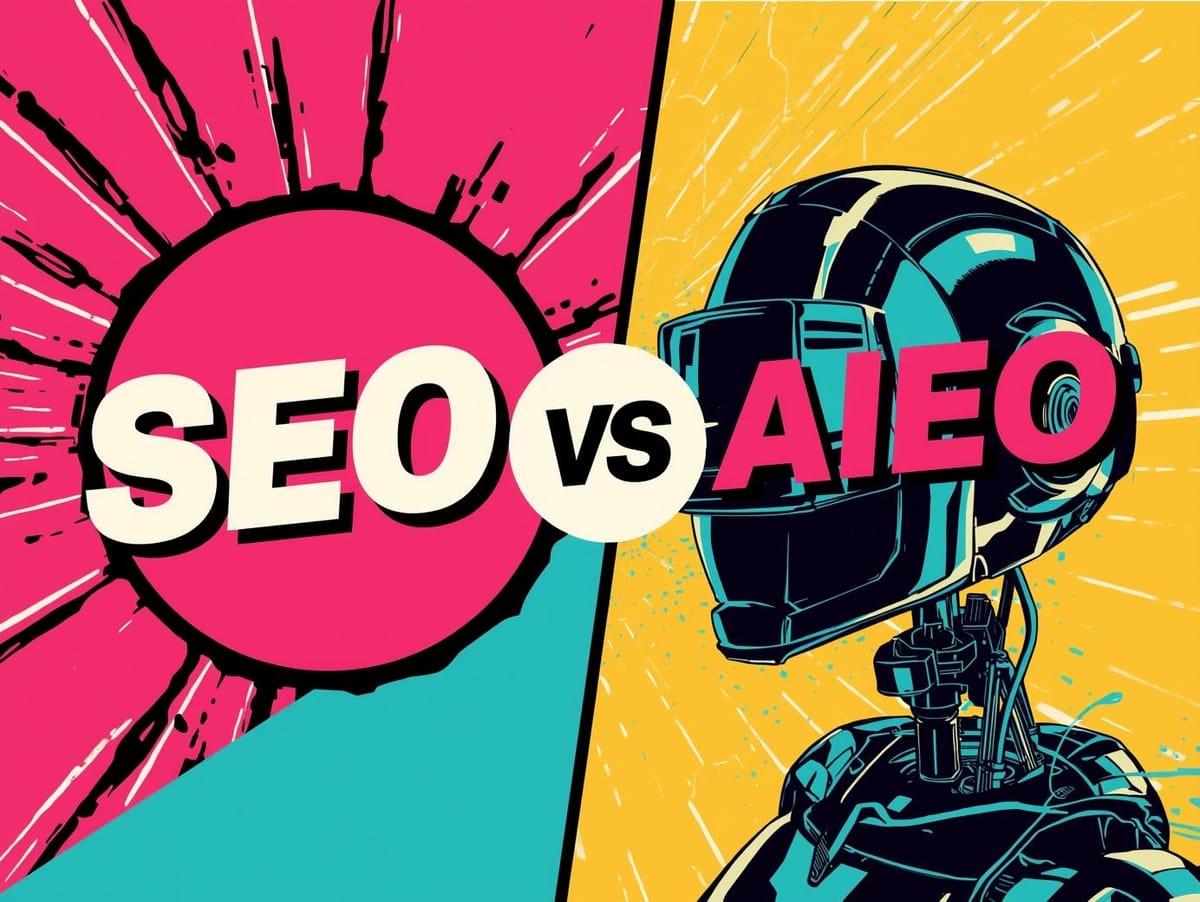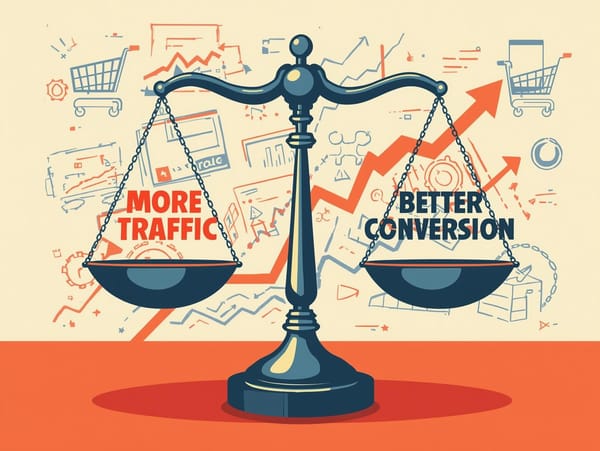SEO vs AIEO: What’s the Difference and Why It Matters for Your Brand

The way people discover content online is changing fast. For years, SEO (Search Engine Optimization) has been the backbone of digital visibility. But with the rapid rise of generative AI tools and AI-powered search experiences, a new discipline is emerging: AIEO (AI Engine Optimization).
If you’re still only optimizing for Google’s blue links, you’re already behind. Today, you need to think about how both search engines and AI engines (like ChatGPT, Gemini, Perplexity, and AI Overviews in Google Search) find, interpret, and surface your content.
In this post, we’ll break down:
- What SEO is (and how it works)
- What AIEO is (and why it’s emerging now)
- Key differences between SEO and AIEO
- How AI engines “read” and use your content
- Practical steps to start optimizing for both SEO and AIEO
What Is SEO?
SEO (Search Engine Optimization) is the practice of improving your website so it appears higher in search engine results pages (SERPs) for relevant queries.
Traditional SEO focuses on:
- Keywords & search intent
- Understanding what people type into Google (or speak into voice assistants)
- Matching your content to those queries and the intent behind them: informational, transactional, navigational, etc.
- On‑page optimization
- Title tags, meta descriptions, headings (H1, H2, H3), URLs, internal links
- Clean HTML structure so search engines can understand your content
- Technical SEO
- Site speed, mobile friendliness, crawlability, indexability
- Sitemaps, structured data, canonical tags, HTTPS, and more
- Off‑page signals & authority
- Backlinks from reputable sites
- Brand mentions and overall online authority
- User experience
- Time on page, click‑through rate, bounce rate, core web vitals
- Making sure content is easy to read, navigate, and engage with
The goal of SEO: get your pages to rank so users click through to your website.
What Is AIEO?
AIEO (AI Engine Optimization) is about optimizing your content so that AI systems can easily understand, trust, and reuse it when generating answers, summaries, and recommendations.
Instead of only asking: “How do I rank on page 1 of Google?” you also ask:
“How do I become the source AI tools quote, summarize, or link to when users ask questions?”
AI engines include:
- Chatbots and assistants (ChatGPT, Gemini, Claude, Copilot, etc.)
- AI-powered search tools (Perplexity, You.com, NeevaAI-style engines)
- AI Overviews and generative search experiences in traditional search engines
AIEO focuses on:
- Machine readability & structure
- Clear headings, logical sections, bullet points, tables, and FAQs
- Explicit definitions and step‑by‑step explanations that are easy to quote
- Topical depth & coverage
- In‑depth, authoritative content that thoroughly covers a topic
- Related subtopics, use cases, FAQs, and edge cases
- Trust & verifiability
- Citing credible sources, data, and evidence
- Showing author credentials, company expertise, and up‑to‑date information
- Context & metadata
- Schema markup, structured data, and clear entities (people, places, products, brands)
- Consistent naming and terminology so AI can connect your content across the web
- Multi‑format content
- Text, images, charts, videos, and downloadable assets that AI can reference
- Transcripts and alt text to make non‑text content machine‑readable
The goal of AIEO: become a trusted, structured, quotable source for AI systems.
SEO vs AIEO: The Key Differences
SEO and AIEO overlap a lot—but they aren’t identical. Here’s how they differ in focus.
1. Who You’re Optimizing For
- SEO: Search engine algorithms that rank pages in a list of links
- AIEO: AI models that generate answers, not just list links
With SEO, success is a high position in SERPs.
With AIEO, success is being cited, quoted, or linked inside AI‑generated responses.
2. How Content Is Consumed
- SEO world: User scans titles and snippets, then chooses a link
- AIEO world: User sees a synthesized answer first. Links are secondary.
That means your content may influence someone without them ever visiting your site. AIEO accepts this reality and aims to make sure your content still drives brand visibility, trust, and assisted conversions.
3. Ranking Factors vs. Training Signals
- SEO: Factors like backlinks, on‑page optimization, and user behavior
- AIEO: Signals include clarity, structure, topical authority, and how often your content is referenced, shared, or linked to across the web
AI systems learn from massive corpora of text. They’re more likely to surface content that is:
- Well‑structured and unambiguous
- Rich in explanations, definitions, and examples
- Consistent in how it names entities and concepts
4. Metrics of Success
- SEO metrics: Rankings, organic traffic, impressions, click‑through rate
- AIEO metrics (emerging):
- Brand or domain mentions inside AI answers
- How often AI tools link to, summarize, or cite your content
- Assisted conversions from AI‑driven discovery (e.g., referral traffic from AI search tools)
5. Content Strategy
- SEO‑first strategy: Often focused on specific keywords, search volumes, and competitive SERPs
- AIEO‑aware strategy: Focuses on topic authority, content depth, and answer quality rather than keyword variations alone
In other words:
SEO asks, “What keyword can I rank for?”
AIEO asks, “What topic can I own so deeply that AI engines rely on me as a source?”
How AI Engines “Read” Your Content
While traditional search engines crawl pages and index them for ranking, AI engines often:
- Ingest your content during training or retrieval
- Large language models are trained on web content, documentation, public datasets, and sometimes proprietary data.
- Break your content into chunks
- Text is split into smaller segments (paragraphs, sections) that can be retrieved and recombined when answering questions.
- Embed and relate concepts
- AI converts text into high‑dimensional vectors to understand semantic meaning and relationships.
- Generate answers using multiple sources
- When a user asks a question, the AI retrieves relevant chunks from many sources and composes a coherent answer.
To be favored in this process, your content needs to be:
- Clear: Avoid ambiguity and vague statements
- Segmented: Use headings and short sections that each answer a specific micro‑question
- Explicit: State definitions, frameworks, pros/cons, and steps in a way that can be easily lifted into an answer
How to Optimize for Both SEO and AIEO
You don’t need two completely separate strategies. Instead, evolve your SEO approach with AIEO in mind.
Here’s how:
1. Build Topic Clusters, Not Just Single Articles
Create:
- A comprehensive pillar page on a core topic
- Multiple supporting articles that cover related subtopics and FAQs
This helps:
- SEO: Build topical authority and better internal linking
- AIEO: Give AI engines rich, structured material to draw on when answering related questions
2. Write Like You’re Answering Real Questions
Use your audience’s language. Structure content around:
- “What is…?”
- “How to…?”
- “Why does…?”
- “Pros and cons of…”
Add FAQ sections at the end of key pages. These are gold for both SERP snippets and AI‑generated responses.
3. Focus on E‑E‑A‑T (Experience, Expertise, Authoritativeness, Trustworthiness)
Clearly show:
- Who wrote the content (name, role, credentials)
- Real‑world experience, case studies, or data
- References and citations where appropriate
This reassures both search engines and AI systems that your content is reliable.
4. Make Your Content Machine‑Readable
- Use clean HTML and logical heading structure
- Add schema markup (Article, Product, FAQ, HowTo, Organization, etc.)
- Provide alt text for images and transcripts for videos or podcasts
The easier it is for machines to parse your content, the more likely it will be surfaced and reused.
5. Keep Content Fresh and Aligned With Reality
AI models are trained on snapshots of the web, but newer AI search tools mix that with live web content.
- Regularly update key pages with new data, examples, and screenshots
- Highlight dates and “last updated” information to show recency
- Monitor how AI tools currently answer key questions in your niche and fill the gaps
6. Measure and Experiment
Beyond traditional SEO metrics, start monitoring:
- Branded queries like “according to [Your Brand]” in AI tools
- How often AI search tools link to your content
- Referral traffic from AI‑powered platforms and answer engines
Use these insights to refine which topics you double‑down on.
Do You Need to Choose Between SEO and AIEO?
No. SEO isn’t dead—and AIEO isn’t a replacement.
They’re two sides of the same coin: making your content discoverable and useful in a world where both traditional search and AI assistants coexist.
Think of it this way:
- SEO ensures you’re visible in ranked search results
- AIEO ensures you’re visible in generated answers and AI recommendations
Brands that win in the next few years will:
- Keep investing in solid SEO fundamentals
- Evolve their content to be more structured, in‑depth, and machine‑readable
- Proactively monitor how AI tools are talking about their topics and brand
If you start optimizing now—for both search engines and AI engines—you’ll be ahead of competitors who are still thinking only in terms of classic SEO.
Bottom line: Don’t abandon SEO. Upgrade it. Treat AIEO as the natural evolution of how you make your brand discoverable, credible, and quotable in an AI‑driven world.



